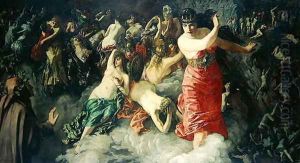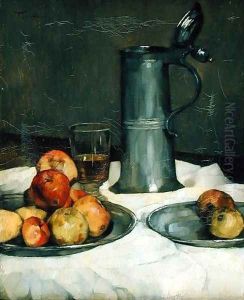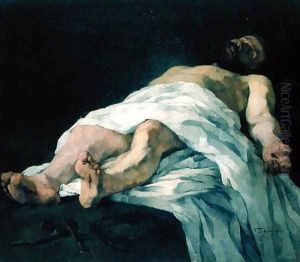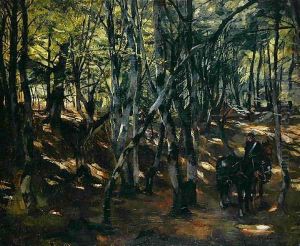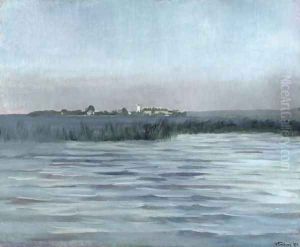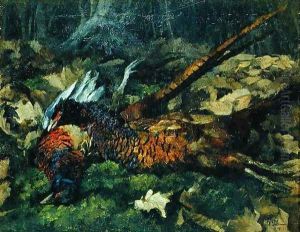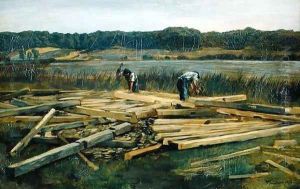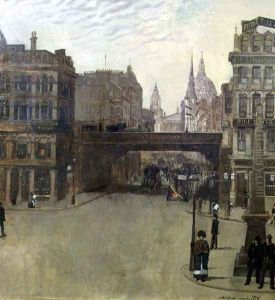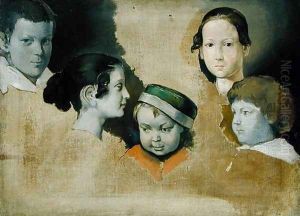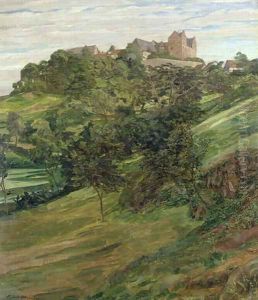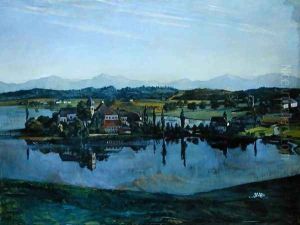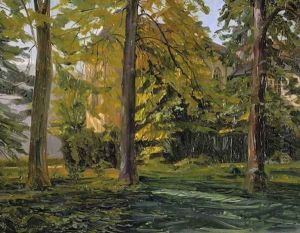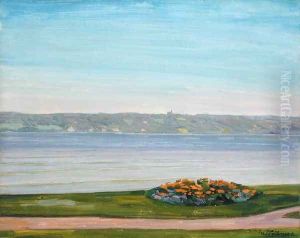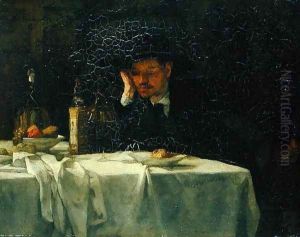Heinrich Wilhelm Truebner Paintings
Heinrich Wilhelm Trübner was a significant figure in German art, particularly known for his contributions to the Realist movement. Born on February 3, 1851, in Heidelberg, Germany, Trübner showed an early interest in art, which led him to pursue formal training. He first studied at the Karlsruhe Academy, where he was influenced by the works of Hans Thoma and Karl Gussow, both of whom played a crucial role in shaping his early artistic development.
Trübner's style evolved significantly over the years. Initially, he was drawn to the academic painting traditions, but his approach changed as he became more exposed to the works of the French Impressionists and the German Leibl Circle, which included Wilhelm Leibl, a prominent Realist painter who greatly influenced Trübner's work. This exposure marked a pivotal shift in his career, steering him towards a more realistic and naturalistic depiction of his subjects.
Throughout the 1870s and 1880s, Trübner's reputation grew as he became a leading figure in German Realism. His work during this period was characterized by a strong emphasis on light and shadow, detailed textures, and a subdued color palette. He was particularly adept at portraiture and still life, although his oeuvre also included landscapes and scenes of everyday life. Trübner's paintings from this era reflect a meticulous observation of reality, combined with a subtle yet profound expression of the inner life of his subjects.
In 1896, Trübner became a professor at the Staatliche Akademie der Bildenden Künste in Karlsruhe, a position he held until his death. This role allowed him to influence a new generation of artists, imparting his Realist ideals and techniques. His later works showed an increased interest in the effects of light and atmosphere, demonstrating his ongoing exploration and refinement of his style.
Heinrich Wilhelm Trübner passed away on December 21, 1917, in Karlsruhe, leaving behind a legacy that had a lasting impact on German art. His commitment to realism, combined with his technical skill and emotional depth, established him as a key figure in the transition from traditional academic painting to the more modern approaches of the late 19th and early 20th centuries. Trübner's work continues to be celebrated for its contribution to the Realist movement and its influence on subsequent generations of artists.
